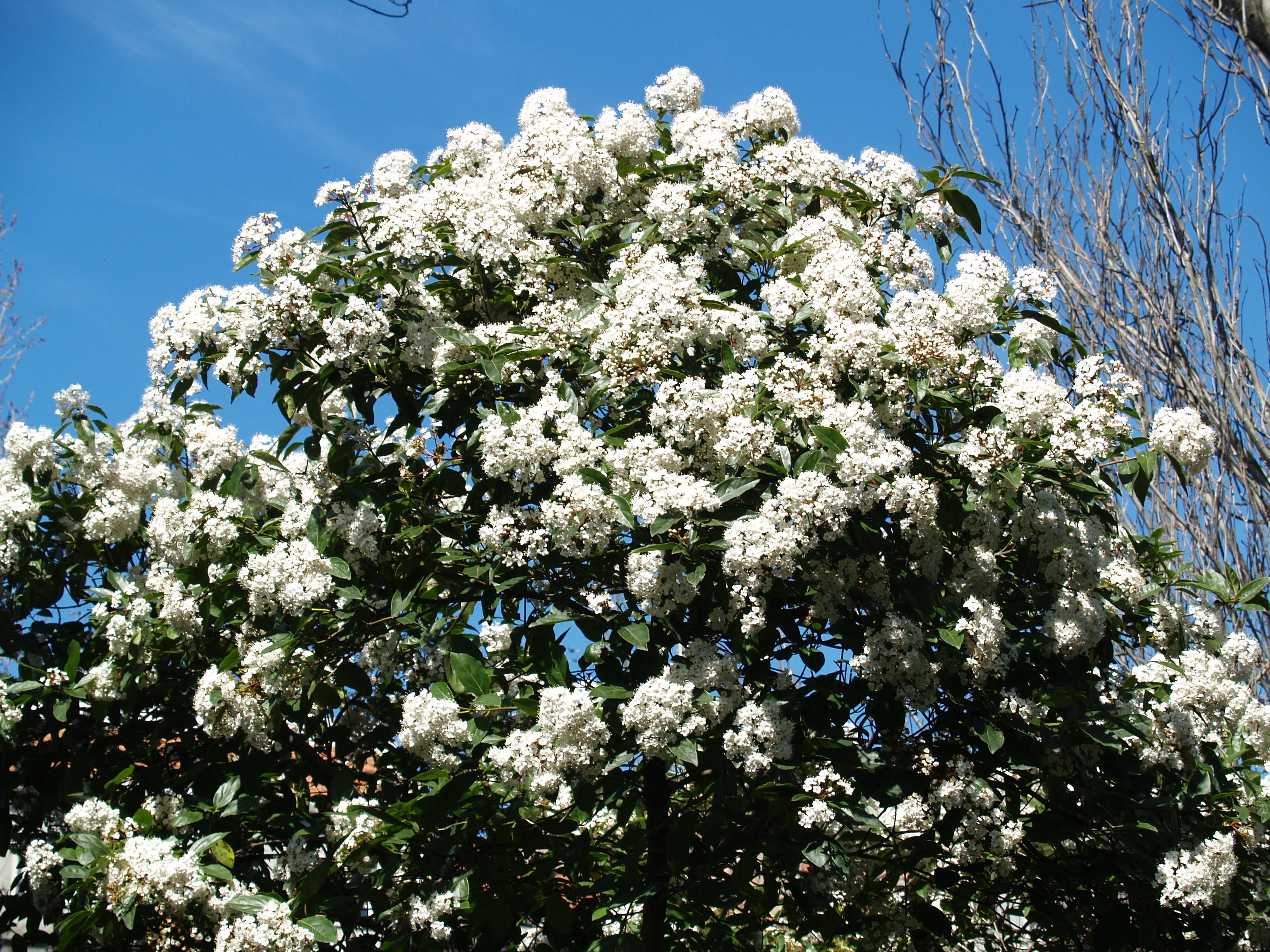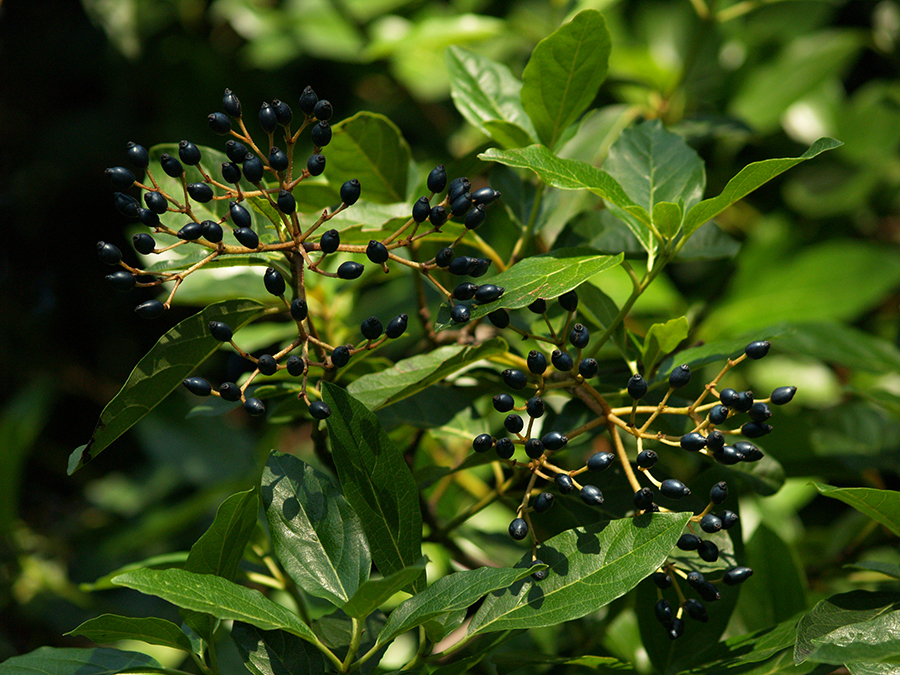
Laurustinus
Viburnum tinus
Family and description
Belonging to the Adoxaceae family, the bush is a perennial plant that can reach a height of between 2 and 3 m. It has opposite and angular branches and a dense, rounded crown. The leaves are simple, opposite, leathery, oval (oval-lanceolate), whole, dark green in colour, with some indents around the veins on the underside.
The hermaphrodite flowers are white to pale pink and bloom abundantly in early spring. The fruit is a drupe 7 to 8 mm long, crowned by 5 teeth, with a dark blue metallic tone and is toxic to humans. The fruit ripens between the summer and early autumn.
Origin and habitat
The Laurustinus is a spontaneous plant in Portugal. It originated in the Western Mediterranean region, extending to the Iberian Peninsula. It is distributed in bush, scrub and riparian galleries, preferring cool, shady places.
It tolerates acidic and basic soils but not calcareous soils.
Uses and curiosities
It is widely used across Europe as an ornamental plant as it is fast-growing, very undemanding in terms of maintenance and resistant to urban pollution. It is one of the most abundant species in the Gulbenkian Garden and is used in the construction of rims, in forest areas and next to streams, throughout the garden.

